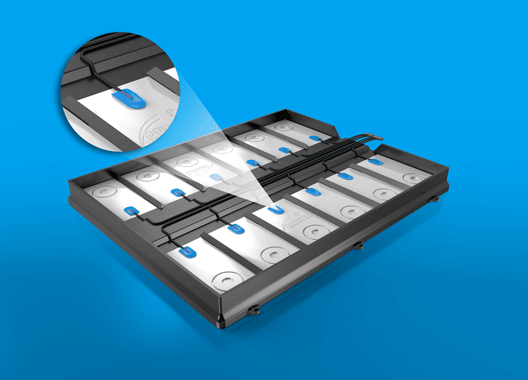More news
- Asian paint regulatory round up – Indonesian exterior paint still uses lead, warns W...
- Nigeria’s paint industry navigates regulatory changes and economic challenges amid p...
- Focus on the global coatings market: Global coatings market outlook
- Ask Joe Powder – October 2024
- Chinese paint majors look to domestic consumer sales as commercial real estate slumps

Panacol has developed specially formulated UV adhesives that protect welded joints on cell contacting systems and battery packs of electric cars from corrosion.
The flexible adhesives enable vibration-resistant connections and have a low ion content.
High-performance cell contacting systems (CCS), which combine individual lithium-ion battery cells for hybrid and electric vehicles to form battery packs, are often connected by welded strands or wires.
To protect these welded joints from corrosion, Panacol has developed special low-ion UV adhesives that are applied as protective coatings.
These adhesives provide additional mechanical support when subjected to vibrations and can compensate for thermal expansion of the different materials.
UV-curing adhesives Vitralit®UV 2113 and Vitralit®UV 2114 are characterised by very high adhesion to many materials and meet the requirements of the automotive industry in terms of media and temperature resistance.
The rheological properties of both Vitralit®UV 2113 and Vitralit®UV 2114 can be adapted to individual customer requirements.
Fluorescent adhesive variations for optical process control are also available.
In just a few seconds, these adhesives can be cured with light in the UVA or visible range.
Both gas discharge lamps and LED spot systems can be used for curing.
Perfectly matched to Panacol adhesives are the UV and LED UV curing systems from Dr Hönle, for example the high-intensity LED Powerline AC/IC HP.
For complex CCS geometries with shadowed areas, dual curing Vitralit®UD 8050 is the perfect choice.
After UV irradiation, this ion-pure acrylate adhesive post-cures in the shadowed areas by reacting with humidity in the air.



